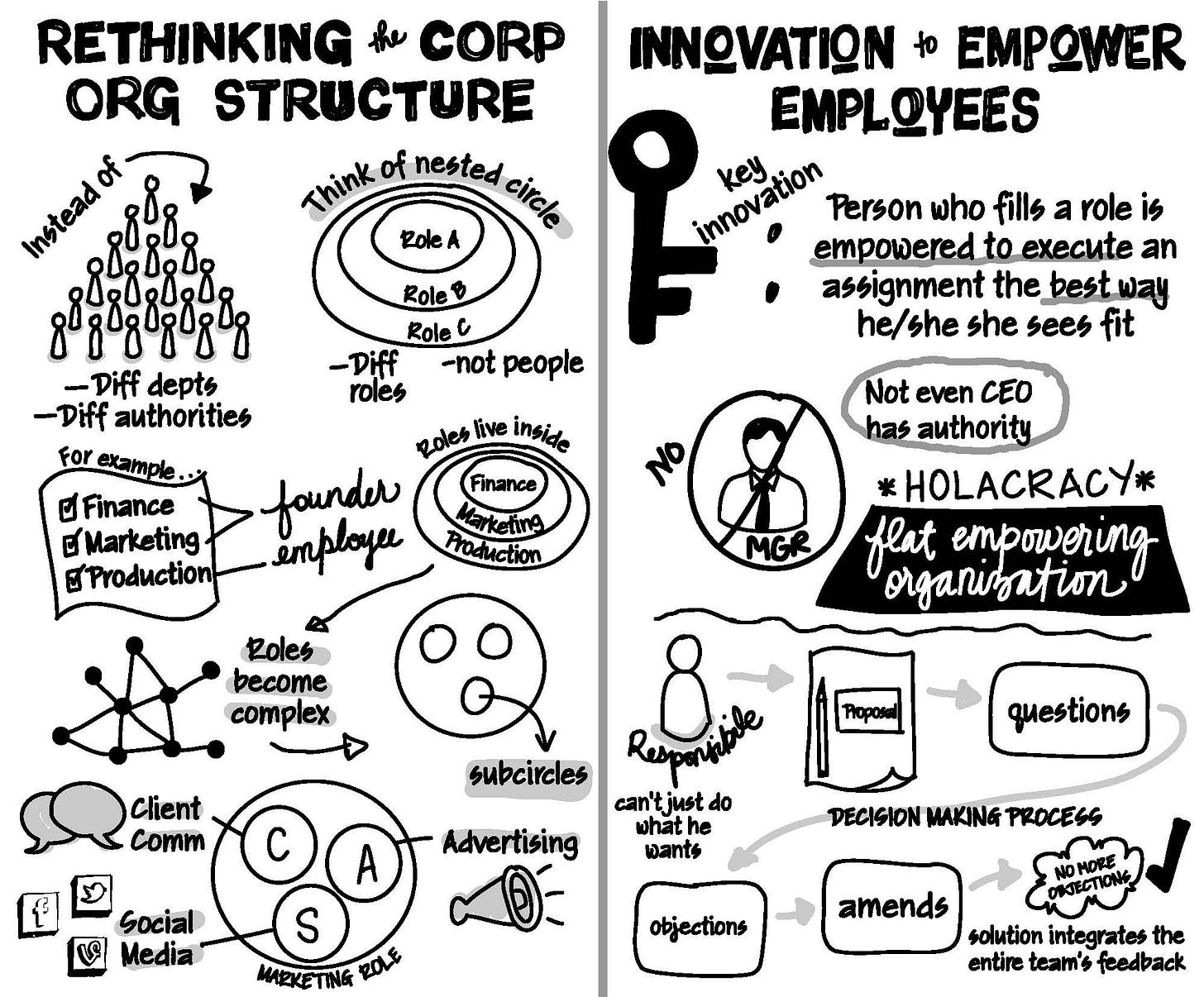The myth of the flat organization
and how Zappos has created a truly unique structure
Elon Musk recently made a tongue-in-cheek proclamation on twitter:

Now anyone who knows Elon would know that isn’t remotely true. If anything, Elon is by all accounts someone who exerts a lot of control and micro-manages tremendously. Here is a graphic showing the host of people just at Tesla who report to Musk:

While not saying it directly, Elon is paying homage to the point that that traditioanl corporate titles are lame and useless while signaling that Tesla is a fairly flat organisation. Now there is nothing novel or unique about this claim or belief. During my life, I’ve spoken to hundreds of companies that truly believe that their team or their organization is completely flat. A Google search for the phrase ‘Companies with flat structure’ returns over 150M results:

The most ironic (mis)use of this phrase comes from blue-chip banking, consulting and law firms. On one end, these firms routinely advertise their ‘up-and-out’ culture while simultaneously also claiming during coffee chats that their team structure is actually flat. Ultimately, saying that your organization is flat is now one of those phrases that just sounds like the right thing to say. Unfortunately, the overuse of the term means that it has now been rendered meaningless.
However, that is not to say that each company’s work around this is hogwash. There are some companies which have done some novel work regarding creating a truly horizontal culture. Ricardo Semler transformed Semco, a Brazilian engineering company, into a truly decentralized company where decisions were made by participation. Here is Semler talking about this experience in a Ted talk:
This unique management style initially gained a lot of attention and was the basis of a lot of case studies throughout business schools. However, as companies failed to replicate this - the movement ultimately lost interest.
So who are the modern day Semco’s of today with unique management styles? Companies like Basecamp, Zapier and Segment have very interesting cultures and management styles which are trying to introduce elements of flatness in the organization.
But the one organization that has truly made a lot of strides with regards to flattening the pyramid is Zappos. Yes, this is the same company that routinely comes out on top of industry NPS and employee engagement surveys. Yes, this is the same company that Amazon paid $940M for because Bezos wanted to bring elements of its customer service to Amazon. Yes, this is the same company where all warehouse employees have an open offer to take between $2000-5000 (depending on tenure) to quit their jobs if they want. What makes Zappos interesting is that it is not a garage-room startup but a 20-year old company with $1B+ in annual sales and 2500+ employees.
Since 2014, Zappos has been transitioning towards a holacracy - an organizational structure centered around the goal of self-organization. The structure is geared towards enabling more efficient and productive meetings and allowing employees to take greater ownership of their work. Here’s a brief video of their CEO explaining the concept..
..and a couple of graphics showing how a holacratic organization differs from a traditional one:


While this post doesn’t do justice to holacracy as a concept, the aim here is to merely surface the work Zappos is doing around this. For those more interested in this, they can read more about Zappos’ experience here or read more about Zappos unique culture by going through their famous culture book.
To receive more posts like this, sign up for our daily newsletter!